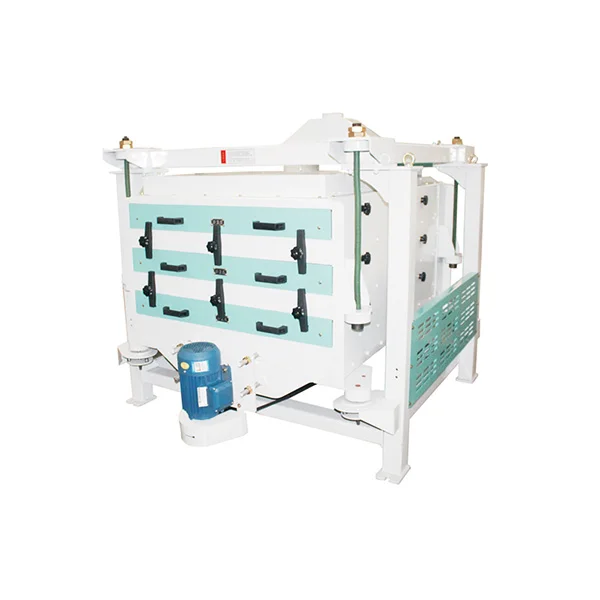In modern rice processing, the rice mill grader plays a crucial role in ensuring product uniformity, quality, and commercial value. As a key piece of equipment in the rice milling line, it separates head rice from broken grains, achieving accurate grading according to size and shape. The growing demand for high-grade rice in both domestic and international markets has led to rapid innovations in rice grading technology, making the rice mill grader an indispensable component of any efficient rice processing plant. In this blog post, as high performance rice grader machine manufacturing factory, ODDLY will share the benefits of rice mill grader for sale, its technological advancements.
Rice Mill Grader and Its Role in Modern Rice Processing
The rice grader machine is designed to classify milled rice based on length and thickness. After the rice has been hulled, polished, and whitened, it is passed through the grader to separate high-quality whole kernels from broken or irregular grains. This process ensures consistency in packaging and market value.
A modern rice mill grader typically consists of multiple sieve layers with different mesh sizes. The rice passes through these sieves, and each layer separates grains of a particular size. High-quality head rice is collected separately, while broken or small fragments are diverted for other uses such as rice flour or feed production.
How the Rice Grading Machine Improves Product Consistency
One of the main purposes of using a rice grading machine is to maintain consistency in the final rice output. Uniform grain size is a critical factor for both aesthetic and culinary reasons—especially in premium rice varieties such as basmati or jasmine rice. Consumers often associate uniform grain size with better taste, appearance, and cooking quality.
By precisely controlling the grading process, rice processors can achieve better standardization across different batches. This not only enhances brand reputation but also simplifies downstream packaging and marketing processes. The rice mill grader helps processors meet export standards and reduces reprocessing costs caused by inconsistent grain quality.
Technological Advancements in Rice Grader Machine
With the continuous development of agricultural automation, automatic rice mill graders have evolved to deliver higher accuracy and efficiency. Some of the recent innovations include:
-
Digital Control Systems: Advanced graders feature PLC or touchscreen interfaces for real-time monitoring and parameter adjustments.
-
Anti-Clogging Designs: Modern sieves are engineered with self-cleaning functions to maintain performance even during long production runs.
-
Energy-Efficient Motors: New-generation graders are equipped with energy-saving drive systems that reduce operational costs.
-
Low Noise Operation: Improved mechanical balance and insulation make the machine quieter and more environmentally friendly.
These technological improvements not only boost productivity but also contribute to the sustainability of rice processing operations.

Benefits of Using High-Precision Rice Mill Grader
The rice mill grader provides multiple operational and economic benefits:
-
Improved Rice Quality: Precise grading ensures that only high-quality head rice reaches the market, enhancing consumer satisfaction.
-
Higher Economic Returns: By accurately separating whole grains from broken ones, rice processors can sell different grades at optimal prices.
-
Reduced Waste: Broken rice can be reused or repurposed for value-added products such as rice flour or snacks.
-
Streamlined Production: Consistent grading reduces the need for manual sorting and reprocessing, saving time and labor costs.
-
Compliance with Market Standards: Meeting export or brand-specific quality standards becomes easier and more reliable.
Integration of Rice Mill Grader in Automated Rice Processing Lines
In a fully automated rice mill, the rice grader machine is typically installed after whitening and polishing stages. It integrates seamlessly with conveyors, elevators, and packaging systems, creating a continuous and efficient processing flow.
Automation allows for synchronized operation—where the grader adjusts its feed rate according to upstream processes. This minimizes bottlenecks and ensures steady throughput. Additionally, data from the grader can be analyzed to monitor production trends, detect quality deviations, and optimize overall plant performance.
Selecting the Right Rice Grader for Your Rice Mill
Choosing the right rice mill grader equipment requires a clear understanding of processing capacity, rice variety, and quality requirements. Factors to consider include:
-
Capacity and Output: Match the grader’s capacity with the daily milling volume.
-
Rice Variety: Long-grain, medium-grain, and short-grain rice require different sieve configurations.
-
Durability and Maintenance: Choose machines made from corrosion-resistant materials with easy-to-replace parts.
-
Precision Level: For export or premium rice, opt for graders with multi-layer sieving and digital control features.
-
After-Sales Support: Reliable suppliers offer installation, training, and maintenance services to ensure long-term performance.
Selecting a well-matched grader enhances overall rice mill efficiency and product quality.
Conclusion
The rice mill grader is far more than a simple sorting device—it is a vital part of the rice milling ecosystem that determines the quality, appearance, and market value of the final product. With the ongoing advancements in automation, digital control, and design optimization, rice processors can achieve higher accuracy, greater efficiency, and better profitability.
As consumer expectations and global rice trade standards continue to rise, investing in a high-performance rice grading machine is no longer an option but a necessity for any competitive rice mill. The future of rice processing depends on precision, and the rice mill grader stands at the forefront of that transformation.
www.oddlyricemill.com
ODDLY
About Author
You may also like
-
High-Precision Automatic Labeling Machines Ensuring Accuracy in Pharmaceutical Packaging Lines
-
BMS Protection Board: Ensuring Safety and Efficiency in Battery Management Systems
-
Unlocking Excellence: The Strategic Role of Elevator OEM in Modern Infrastructure
-
Are Steel Stacking Doors the Perfect Choice for Your Space?
-
How EI Laminations Are Manufactured: From Punching to Stacking
